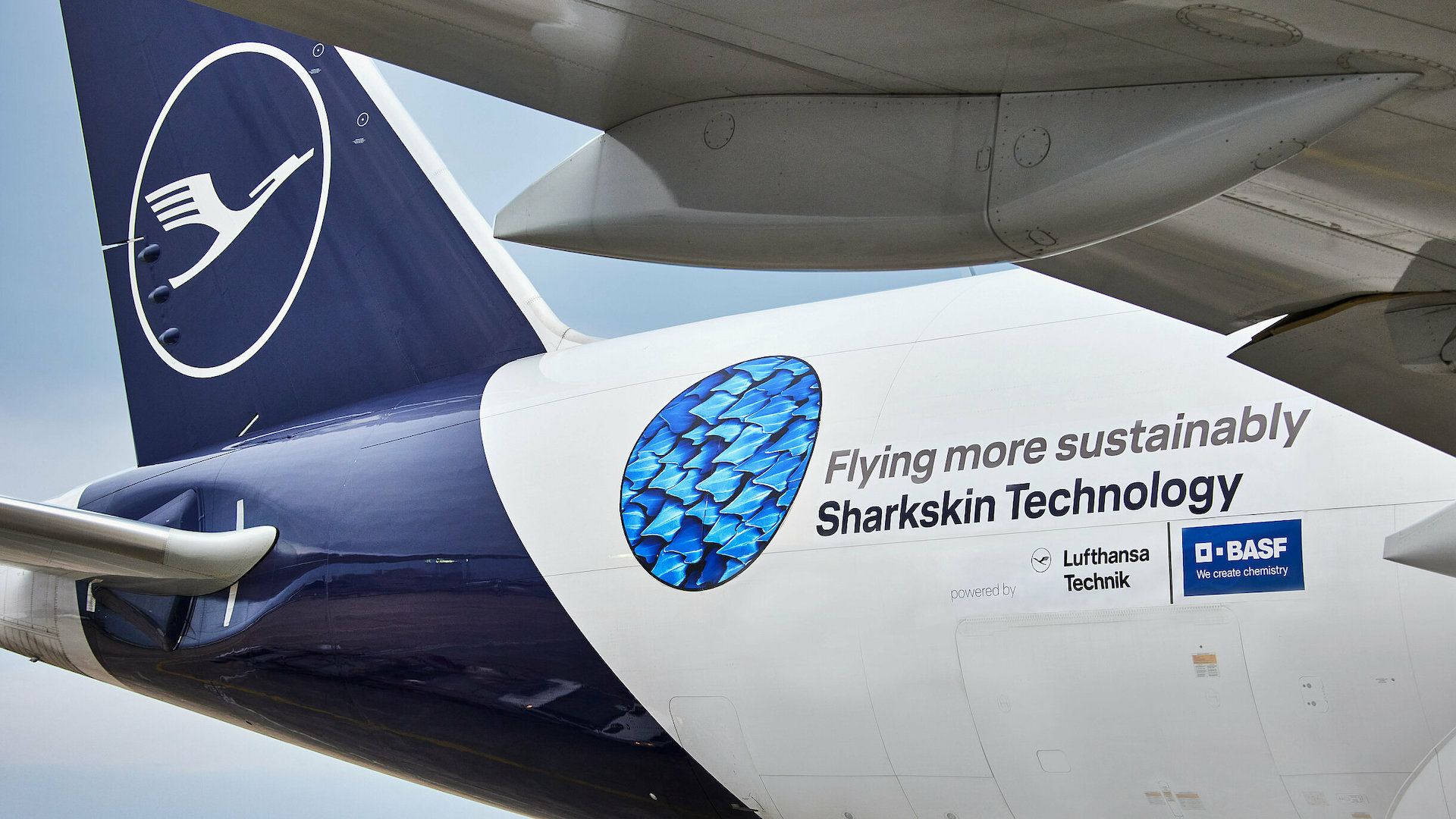
Photo Credit: Lufthansa Group
A group of 17 airliners is cutting through the skies with shark-like ease thanks to a thin film that mimics the ocean predator’s skin. And now the tech is set to help take a big bite out of the sector’s air pollution tally.
The biomimicry innovation was developed by Germany’s Lufthansa Technik and BASF to reduce drag, resulting in more efficient travel and less heat-trapping air pollution. The product is dubbed AeroSHARK, according to Lufthansa’s website.
The initial fleet of sharky planes includes Boeing 777s and a 747 being used by Lufthansa and Swiss International Air Lines, with Austrian Airlines set to join the pack. The planes have logged more than 100,000 miles, preventing nearly 21,000 tons of carbon dioxide pollution so far, all according to Lufthansa statistics.
In September, Japan’s All Nippon Airways welcomed its first AeroSHARK.
“The introduction of AeroSHARK … marks a significant milestone in our sustainability strategy, in support of our broader goal of reducing carbon emissions across our fleet,” Kohei Tsuji, a Nippon official, said in a press release.
It works by mimicking the small riblets on sharkskin that help the sea creature to glide through the seas. Patches of film with millions of the tiny protrusions are applied to the plane’s surface in a way that aligns with airflow. The riblets are only 50 micrometers high, all per Lufthansa.
“The riblets achieve efficiency gains, by reduced friction, similar to those of their counterparts in nature, and can also improve lift if attached on wings,” the designers report.
A graphic on the Lufthansa website states that the expense-reducing invention already saved more than 6,600 tons of jet fuel.
Biomimicry is also helping other industries. German scientists are working with bacteria in concrete mixes to safely trap and store planet-warming carbon dioxide. At the University of Bonn, experts are developing a washing machine filter inspired by fish gills to catch harmful microplastics before they enter the environment.
The shark work is part of Lufthansa’s goal of being “carbon neutral by 2050,” as reported by Simple Flying and the company. The riblet film is a starting point.
Each Boeing is fitted with around 8,600 square feet of the film, all put on the fuselage and nacelles by hand. It is durable — withstanding temperature shifts, pressure changes, and ultraviolet radiation — and requires no special cleaning, all per its makers.
The innovation could make greater waves if it is rolled out across fleets globally, which produce about 3.5% of planet-warming fumes. Other innovations in air travel include hydrogen and even electric aircraft.
Anyone can play a role in helping companies reach their planet-friendly goals by supporting companies with legitimate plans that are achievable. By staying educated on so-called greenwashing — when businesses tout ambitious climate strategies with little or no progress — you can better decide what corporations are being truthful.
Lufthansa claims its sharkskin-inspired plane covering is among the projects getting results.
“These are the first of hopefully many more aircraft of this type,” Lufthansa COO Harald Gloy said in a press release from August about AeroSHARK being placed on Austrian Airline planes.
Join our free newsletter for weekly updates on the latest innovations improving our lives and shaping our future, and don’t miss this cool list of easy ways to help yourself while helping the planet.

